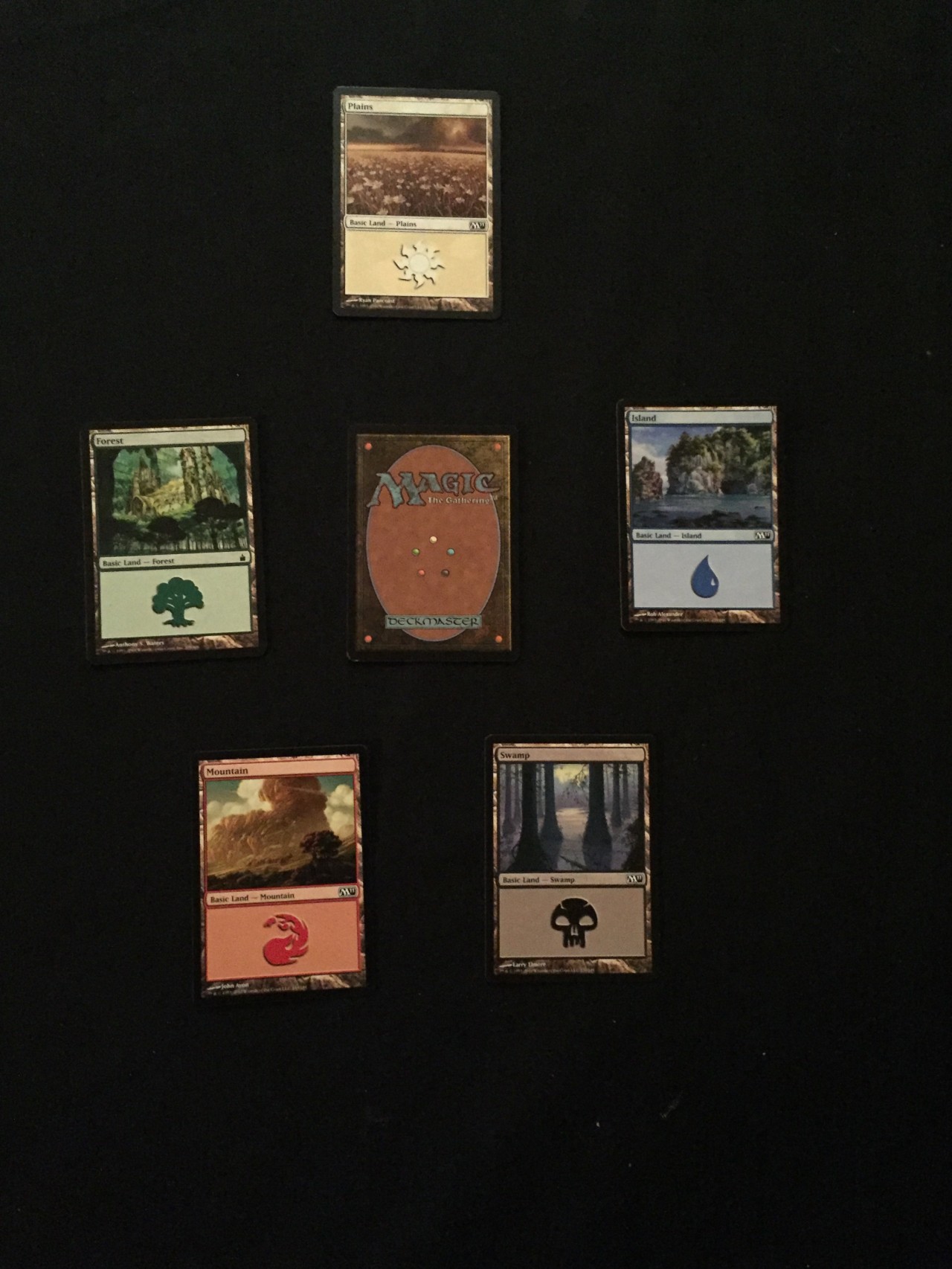Last week I did a top level blog on board games and I previously did one on Dungeons and Dragons. This week I will tackle something a lot more difficult, discussing the collectible card game Magic the Gathering. There is a link between MtG and D&D, both are owned by a company called Wizards of the Coast which is a subsidiary of Hasbro. For the rest of this blog I will just say Magic instead of Magic the Gathering as that is what most players call it. It was the original name for the game before it was decided that Magic could not be used as a trademark. It was also a “Deckmaster” game which is on the cards today but has not been used in any real way since almost the beginning of the game.
Magic has been described as one of the best games invented. It also is a tremendous profit center for Hasbro. I am not going to go into the origin story of the game, it has been told many times before and it is easy to find with a search. One of the key innovations was a random assortment of cards (15 in total) sold in a pack not much different than hockey cards (OK, baseball cards for my mainly American reading audience). Unlike a pack of playing cards, you did not get everything you needed to play in one pack and you did not know what was in the pack before you opened it. Today the game is going strong with both physical packs and digital packs being opened in record numbers. Even online, you still open a pack of 15 cards at the same retail price as the physical cards. The collectible nature of the game added an extra foundation to the game. WoTC still protects the original collectors be promising not to reprint certain cards.
Although I will not explain the origin of the game, I will cover the basics. Each player, and the game is usually played as a two person game, best 2 of 3, is considered to be a planeswalker. The game universe accepts that there is a multiverse and the planeswalkers can move from universe to universe. The energy source is mana and the mana comes from the land beneath you and it comes in 5 favors linked to the type of land plus “colorless” mana that does not come from the land. The colors of mana are white, blue, black, red and green and they are five points around a circle to represent the colors and the adjacent colors are allies with each other and the opposite colors are enemies. The land types are plains, islands, swamps, mountains and forests.

You use the lands you play from your hand to generate the mana you need to play other cards. The more mana a spell requires the more powerful the spell is (not always, there are better cards and worse cards printed but that rule normally works). You can only play one land a turn (all rules can be changed or broken) so powers ramp up over time and you also need the right color of mana for the spell you want to cast.
Spells are divided into a few basic categories. Creatures, sorceries, instants (faster sorceries), enchantments and artifacts. Since a main part of the game is that rules can be changed or broken by the text on any card you can only take that as a general guideline. A basic spell just needs one specific color mana plus any other color to cast. Some spells (called gold spells) require more than one color of mana to cast. Some spells resolve immediately and some stick around. Creatures are a good example of a basic spell that sticks around and can attack or defend in the future (all rules can be changed and creatures can die and can be resurrected). Each land type/color has a basic personality (search Mark Rosewater color pie if you want a detailed explanation of this).
Each player starts with 20 life and the game ends when someone goes to zero life or runs out of cards to draw. There are three typical ways to play. Constructed decks are at least 60 cards with no more than 4 of any one card except for lands (these have additional restrictions and rules an change based on cards played). Sealed deck is played with 40 card decks built. From a card pool you are given (normally sealed packs plus extra lands). Draft is also played with a minimum 40 card deck except that you choose the cards you play with by opening packs and choosing one card and then passing the remaining cards to your opponents.
This may all sound complicated, but WoTC has invested a lot of time and effort into teaching tools and apps. Just go to www.wizards.com to the Magic section and look for the PC or smartphones apps and you can quickly learn how to play.
The true genius of Magic is that the text on the card can modify any rule. Usually a card does not modified a standard rule, but they can. The mix of the randomness that comes from shuffling cards, the rules not being constant and the skill that each player brings creates a game that is not only just worth playing but a game I think that everyone should try at least once.
Just to give some examples:
Hockey cards (collectible)
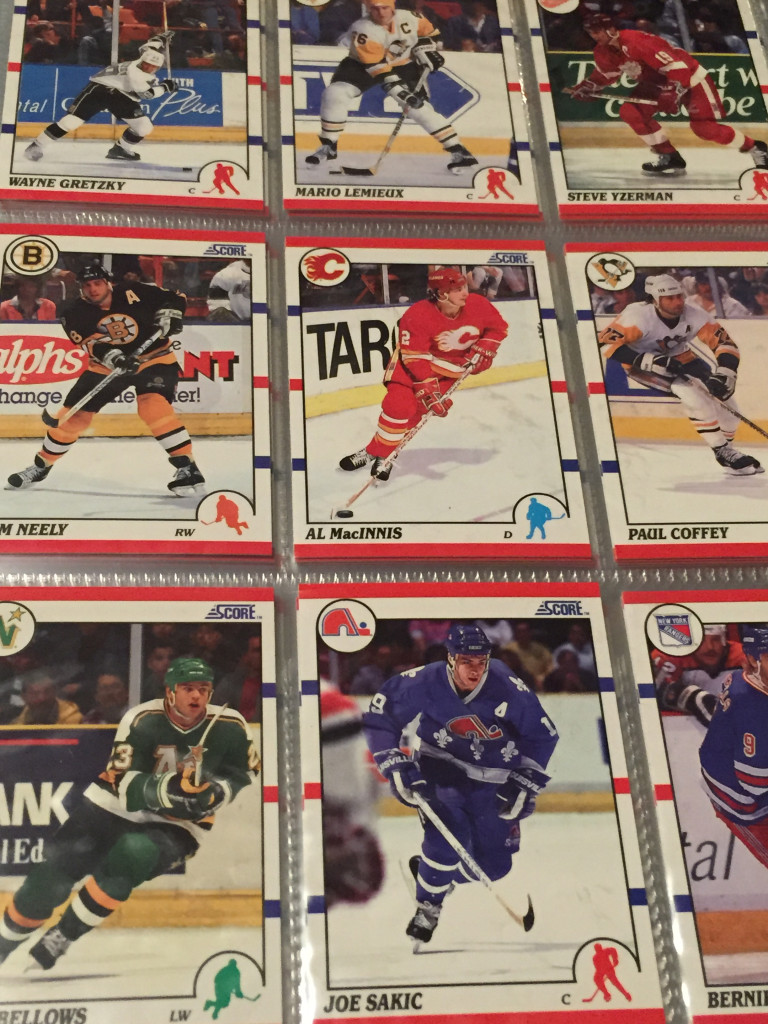
Basic land types
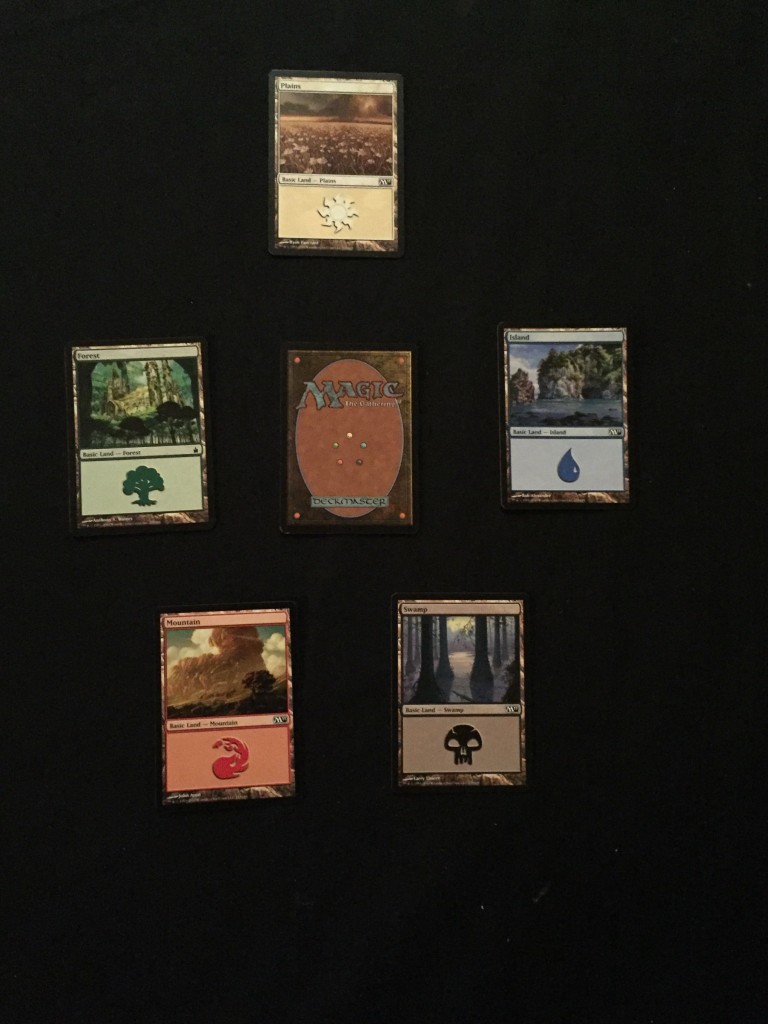
Normal spells (including a foreign language card)
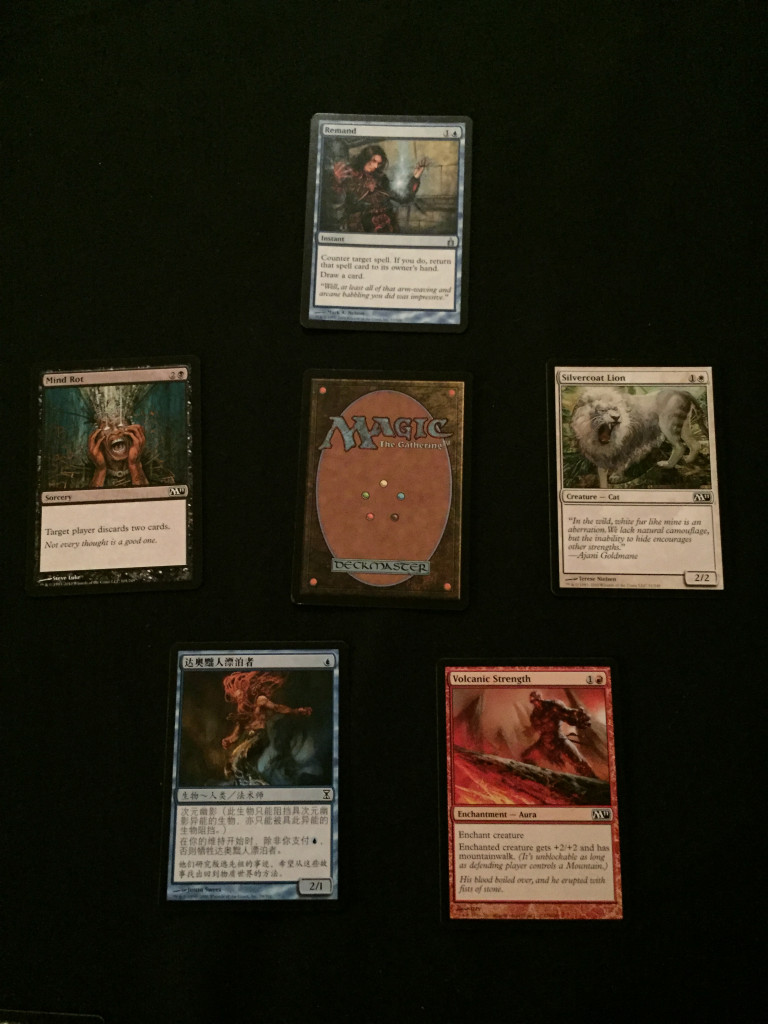
Non-standard lands, artifacts, and spells that require more than one mana color
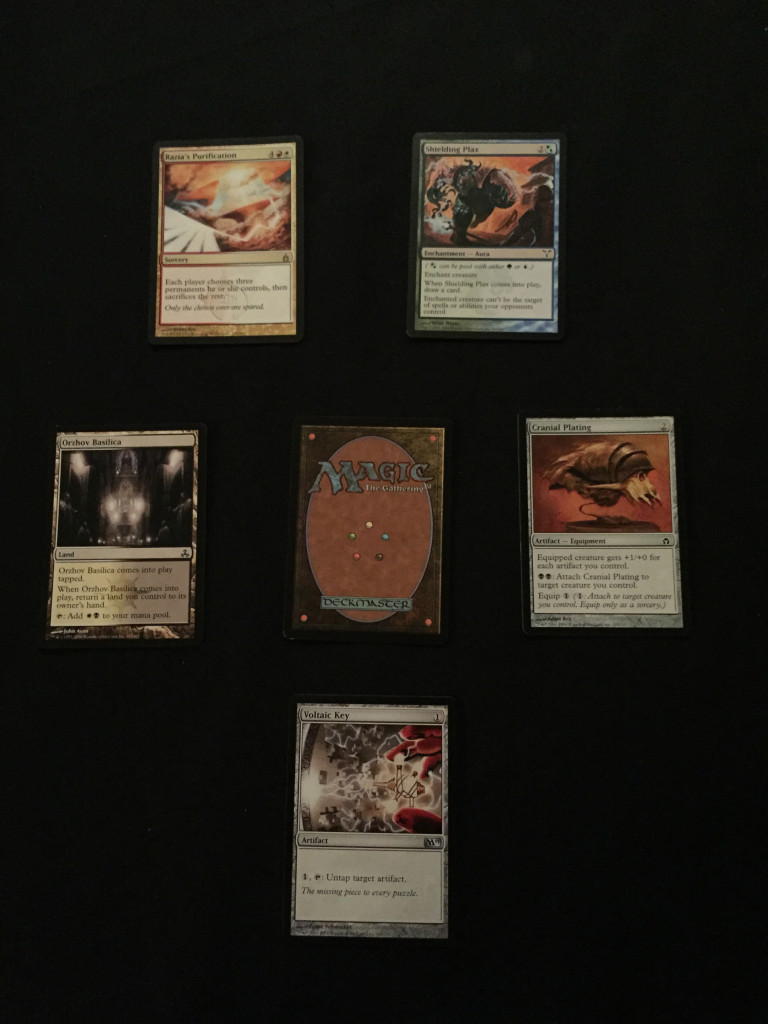
Foil, mana color choices, land that makes no color mana, a card that contains two cards and a card that has been printed at different rarities over the years.
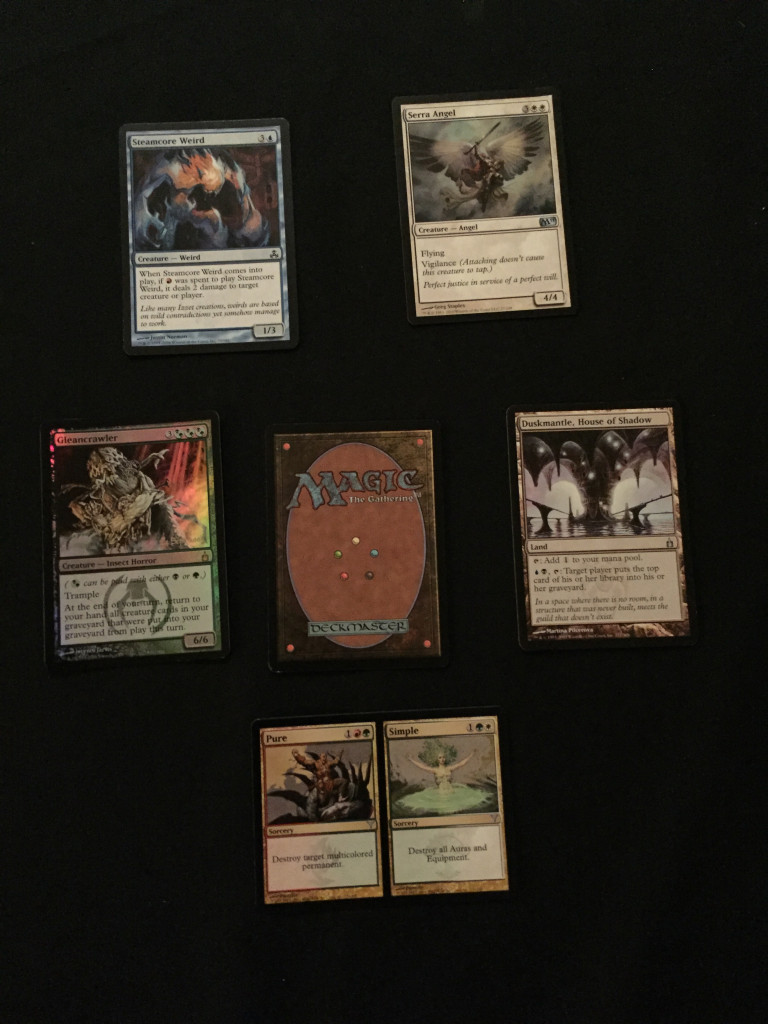
As can be seen from the pictures, the most prominent part of each card is the art. This was another decision made early in the game development. The art makes each card distinctive and easy to identify. I own several original art pieces that I purchased from the artists that created the art for the game.
The second major element of the game is the rules box below the art. This is where any additional rules or effect that the card has are described. The top and bottom is used to display the basic parts of the card that do not vary too much from card to card. These are the mana cost to play the card, the card name, the card type, and if a creature, the power and toughness of the creature. The rules text explains the rest of what you need to know about the card.
The cards and the game itself is fun, but the social scene around the game is another key part of the appeal. The game is so large and successful that WoTC runs a Pro Tour with a large structure around it. New cards are released on a regular basis and existing card are rotated out of standard play so the game is always changing. There is a large internet based community that is constantly refining new decks. As a physical game, you need to play in person against other players and that represents a social outlet and chance to meet new people. The game is global and published in many languages so even if you travel to China you can find players.
I enjoy the game because it is a good game. But I ended up loving the game because of the people I met and played with. When I started playing in my current town in the SF Bay Area, I quickly found a store and ended up with a good social network from the players in the store. One of the regular Magic players I met then is playing D&D with me now. When I moved to Singapore, there was a team-based tournament and I reached out on the Internet to find a teammate and to this day the guy I found (Gabriel) is a good friend. I traveled to NYC and met BDM (Brian David-Marshall) who was running the main store in NYC for Magic when I met him. BDM is a journalist and historian covering the game and the Pro Tour and when he traveled to Singapore he already knew me and met Gabriel. So he was able to sample local food recommended by a local. He has returned the favor to me in NYC several times.
Magic is a friendship game. Anyone that has been playing it for a while and goes to competitions quickly expands their social circle. Any city or town that has a hobby store that sells Magic will have a Friday Night Magic tournament (normally draft) and you can meet locals there. I have been in some small towns and still met Magic players. You can play online as well, so even if there are no local players, you can always find someone to play with. I met pros like Jake and John and just regular people that liked the game and everyone was always friendly.
One more ironic point. I bought Hasbro stock a few years ago under the theory that their dividends would cover what I spend playing Magic and it is now one of my absolute best performing stock.
So reach out and feel the mana in the land beneath you. Cast some spells, meet some people and enjoy yourself. Just be warned that the game is nicknamed cardboard crack and it can easily draw you deep within itself.
